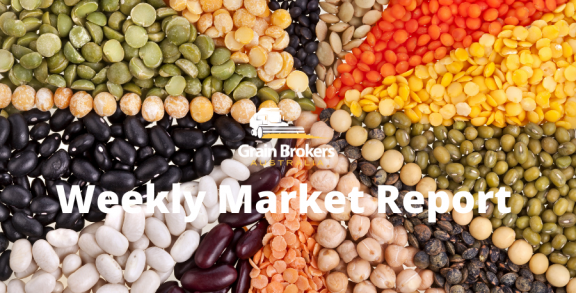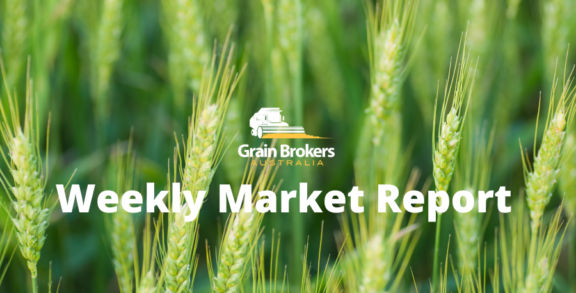
Soybean meal futures posted a new high for the March contract in Chicago Board of Trade derivatives markets last week as drought conditions continue to steal soybean production potential in Argentina and accelerate concern for global meal supplies.
At the conclusion of last week’s trade, the March futures contract settled at US$496.50 per short tonne (2,000 pounds in the imperial scale), up US$4.70/ST on the day and US$23/ST for the week. That is the biggest single-week rally since early December last year when the contract spiked US$45.8/ST in five days as the market began to digest the escalating crop issues in Argentina. The contract has now rallied more than 25 per cent since the Argentine soybean planting period opened in November last year.
Soybean meal is produced through the processing and separation of soybeans into oil and meal components, referred to as the crush. Generally, one metric tonne of soybeans will produce around 183 kilograms of soybean oil, 733 kilograms of 48% protein soybean meal, 50 kilograms of soybean hulls, and 17 kilograms of waste. If the soybeans are of high quality, the processor can get more meal weight by including more soybean hulls in the crush while still meeting the minimum 48% protein specification.
Soybean meal accounts for about two-thirds of the world’s high-protein animal feed, followed by cottonseed and rapeseed meal, which together account for less than 20%. It provides an easily digestible source of amino acids and metabolisable energy in stockfeed rations, particularly for the poultry, pork, aquaculture and dairy cattle industries.
Globally, about 98 per cent of soybean meal is used in animal feed, with the balance going into human consumption products such as soy flour. And demand has been growing quite rapidly over the last 40 years. According to a recently published report by Allied Market Research, the global soybean meal market was valued at US$59.2 billion in 2021 and is expected to reach US$94.2 billion by 2031, growing at an annual rate of 4.9 per cent over the ten-year period.
Argentina is the world’s biggest exporter of soybean meal and soybean oil, by-products of the country’s huge soybean crushing industry. But soybean production is now on track to be the lowest since the 2008/09 season when the crop struggled to reach 32 million metric tonne. Rains recorded over the last week have slowed the deterioration in crop conditions, but such are the soil moisture deficits across most of the planted area that much more is needed just to maintain current production projections. The forecast for the next two weeks is generally hot and dry, with some scattered showers providing minor relief.
The USDA’s Foreign Agricultural Service is the latest to slash their soybean production outlook for Argentina this season due to the extremely hot and dry weather conditions that have tormented the crop since planting. The FAS is now calling the crop 36MMT, down from the USDA’s January forecast of 45.5MMT. The Buenos Aires Grain Exchange left its estimate unchanged last week at 41MMT but does have a lower bias. The Rosario Grain Exchange splits the two at 37.1MMT against a five-year average of 45.9MMT.
The USDA’s January supply and demand update pegged global soybean meal production at 257MMT, 75.2MMT of which is in China. The second biggest producer is the United States at 47.9MMT, followed by Brazil at 40.7MMT. Argentina is next at 29.6MMT, but that was using a soybean crop of 45.5MMT. While imports are supplementing domestic supply, they will not fully compensate for the lost production. Domestic crushers will fight hard to buy new crop beans away from export channels, but a downward revision reflecting the lower production outlook is expected.
On the trade front, the USDA pegged global exports at 69.7MMT in January, down slightly month-on-month but still 2MMT higher than last season. Top of the list was Argentina at 26.5MMT, followed by Brazil at 20.7MMT and the United States at 12.4MMT. Like production, Argentinian soybean meal exports are expected to be revised lower as a smaller domestic crush decreases the country’s exportable surplus.
A record crop and positive crush margins in Brazil should result in higher soybean meal production and exports. But they are unlikely to fully compensate for lower Argentinian exports unless soybean demand from China decreases significantly on the back of plummeting soybean hog prices which has decimated the Chinese crush margin.
According to the Rosario Grain Exchange, preliminary shipping data put Argentina’s soybean meal and pellet exports at 1.06MMT in January, down 22 per cent on the corresponding period last year, almost 56 per cent lower than in January 2021 and more than 43 per cent lower than the five-year average of 1.87MMT. In fact, it is the lowest January export figure in the last 20 years.
This situation highlights one of the many issues with the latest preferential exchange rate program for soybean farmers, much to the chagrin of domestic processors. Known as soybean dollar 2.0, the policy was designed to promote sales to both local crushers and the export market. However, a large majority of the soybeans sold by farmers in December ended up on ships to China rather than being crushed in Argentina and exported as meal or oil. And now that the policy has finished, local farmers are holding back soybean sales, waiting for the next iteration.
This has left domestic processors scrambling for supplies ahead of harvest. Collectively, Argentina’s crushers claim to have already purchased at least 1MMT of Brazilian beans for delivery in February and March and are likely to import another 1MMT before new crop supplies hit the market. These numbers dwarf the previous import record of 657,000 metric tonne set in the 2018/19 season after a disastrous harvest of only 37.8MMT the previous year.
The late harvest in Brazil is adding to the quandary. Soybean imports from Brazil would typically come by river from Porto Murtinho in the state of Mato Grosso do Sul or by road from the southern state of Rio Grande do Sul. However, most of the deals done to date are via the Amazon River port of Santarem, in the state of Para, a journey of around 4,500 kilometres. Forward crush margins will ultimately define final import volumes for the season, but it will undoubtedly be an extremely testing season for Argentine processors.
Call your local Grain Brokers Australia representative on 1300 946 544 to discuss your grain marketing needs.





